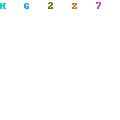
Jinnah gave a precise definition of the term 'Pakistan' in 1941 at Lahore in which he stated:
Some confusion prevails in the minds of some individuals in regard to the use of the word 'Pakistan'. This word has become synonymous with the Lahore resolution owing to the fact that it is a convenient and compendious method of describing [it].... For this reason the British and Indian newspapers generally have adopted the word 'Pakistan' to describe the Moslem demand as embodied in the Lahore resolution.[40]
Jinnah issued a call for all Muslims to launch "Direct Action" on August 16 to "achieve Pakistan".[41] Strikes and protests were planned, but violence broke out all over India, especially in Calcutta and the district of Noakhali in Bengal, and more than 7,000 people were killed in Bihar. Although viceroy Lord Wavell asserted that there was "no satisfactory evidence to that effect",[42] League politicians were blamed by the Congress and the media for orchestrating the violence.[43] Interim Government portfolios were announced on October 25, 1946.[44] Muslim Leaguers were sworn in on October 26, 1946.[45] The League entered the interim government, but Jinnah refrained from accepting office for himself. This was credited as a major victory for Jinnah, as the League entered government having rejected both plans, and was allowed to appoint an equal number of ministers despite being the minority party. The coalition was unable to work, resulting in a rising feeling within the Congress that independence of Pakistan was the only way of avoiding political chaos and possible civil war. The Congress agreed to the division of Punjab and Bengal along religious lines in late 1946. The new viceroy Lord Mountbatten of Burma and Indian civil servant V. P. Menon proposed a plan that would create a Muslim dominion in West Punjab, East Bengal, Baluchistan and Sindh. After heated and emotional debate, the Congress approved the plan.[46] The North-West Frontier Province voted to join Pakistan in a referendum in July 1947. Jinnah asserted in a speech in Lahore on October 30, 1947 that the League had accepted independence of Pakistan because "the consequences of any other alternative would have been too disastrous to imagine."[47]
The independent state of Pakistan, created on August 14, 1947, represented the outcome of a campaign on the part of the Indian Muslim community for a Muslim homeland which had been triggered by the British decision to consider transferring power to the people of India.MORE CLICK HERE






